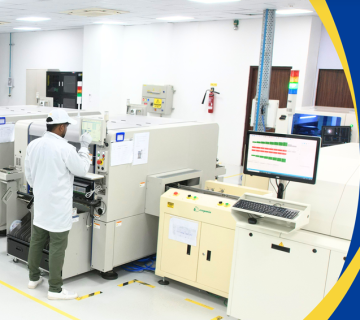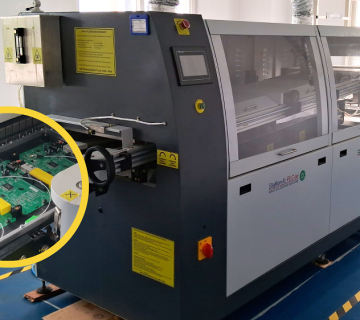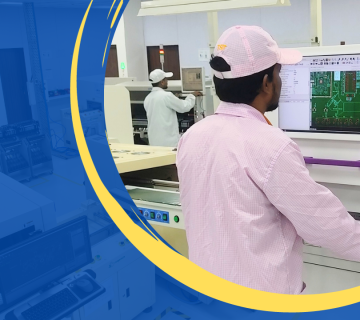Printed Circuit Boards (PCBs) are at the heart of almost all electronic devices, from simple gadgets to complex industrial machinery. Ensuring the longevity and reliability of PCBs is of utmost importance, especially in environments prone to harsh conditions or potential contaminants. One effective method to safeguard these vital components is through conformal coating. In this blog, we will explore the concept of conformal coating, its purpose, advantages, and whether it is truly necessary for PCBs.
What is Conformal Coating?
Conformal coating is a protective layer applied to the surface of printed circuit boards. This coating is typically a thin film of material that conforms to the PCB’s contours, covering its components, traces, and solder joints. The primary objective of conformal coating is to shield the PCB from various environmental factors that could otherwise lead to performance degradation or failure.
The Purpose of Conformal Coating
The application of conformal coating serves multiple crucial purposes:
Environmental Protection: Conformal coatings safeguard PCBs from moisture, dust, dirt, and chemical contaminants that may be present in the device’s operating environment. This protection is especially vital for electronics used in outdoor settings or industrial applications.
Dielectric Barrier: Conformal coatings possess insulating properties, acting as a dielectric barrier. This barrier helps prevent short circuits and unintended electrical connections between components on the PCB.
Mechanical Protection: PCBs in certain applications may experience vibrations or physical impacts. Conformal coating provides a protective layer that can absorb some of the mechanical stresses, reducing the risk of damage to delicate components.
Temperature Resistance: Some conformal coatings are designed to withstand extreme temperatures, making them suitable for applications in high-temperature environments.
Advantages of Conformal Coating
Enhanced Reliability: By safeguarding against environmental elements, conformal coating significantly improves the reliability and longevity of PCBs, reducing the risk of premature failure.
Cost Savings: While the upfront cost of applying conformal coating might be an additional expense, the long-term benefits outweigh this cost. It helps prevent potential costly repairs or replacements of PCBs damaged by environmental factors.
Versatility: Conformal coatings are available in various materials, catering to specific application needs. Silicone, acrylic, urethane, and epoxy coatings are common options, each offering distinct properties to suit different environments.
Is Conformal Coating Necessary for PCBs?
The necessity of conformal coating for PCBs depends on the intended application and operating environment. PCBs employed in critical systems, outdoor electronics, aerospace, automotive, or marine applications, where exposure to moisture, dust, or chemicals is likely, can significantly benefit from conformal coating.
However, for applications in controlled indoor environments, conformal coating might not be as crucial. In such cases, other protective measures may suffice to ensure the PCB’s reliability.
Conclusion
In conclusion, conformal coating serves as an essential protective layer for PCBs, offering benefits like enhanced reliability, environmental protection, and improved longevity. Its necessity depends on the specific application and operating environment of the PCB. For electronics facing harsh conditions, conformal coating is undoubtedly a valuable investment that can help prevent potential failures and extend the life of the PCB. Ultimately, the decision to use conformal coating should be based on a thorough evaluation of the application’s requirements and potential risks.





No comment